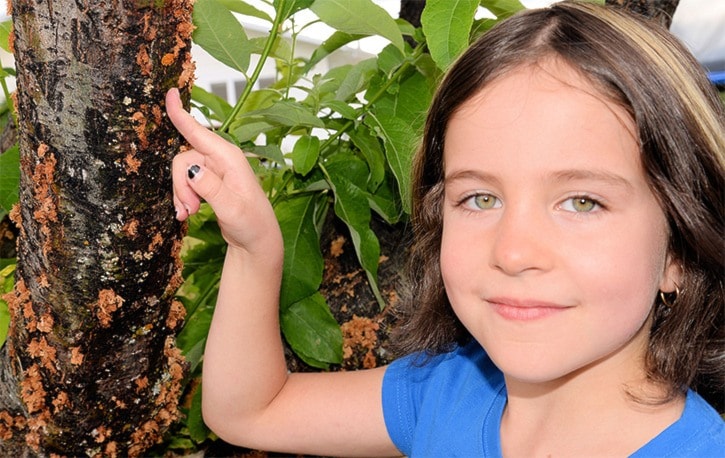Several species of deciduous trees in this region are coming under attack from an insect that may not be native to North America.
Local agencies, including the Ministry of Forests, Lands and Natural Resource Operations, have received numerous reports in recent weeks of insect attacks on willow, poplar, and some other hardwoods in the Lakes District and Bulkley Valley. The damage is so great in some areas that entire stands are infested.
The culprit, according to experts, is cryptorhynchus lapathi, more commonly known as the poplar-and-willow borer. The insect is a type of weevil; adults are predominantly black with either grey or pink scales, have long, curved snouts, and can grow up to one centimeter (cm) in length.
Although the bug’s preferred target is willow trees with stems between two and eight cm in diameter, it will also attack poplar, black cottonwood, birch, and some ornamental trees (though maple and apple seem immune). Tell-tale signs that a tree is under attack from cryptorhynchus lapathi include ‘flagging’ (the leaves on attacked stems turn yellow or brown), irregular splits and holes in the bark of host trees through which sap and moist red-brown and white shavings exude, and piles of shavings around the base of attacked stems.
A large willow in the back yard of Fifth Avenue residents Dale and Maureen Turner is one tree hit hard by the insects. Dale said Friday that within a short period of time, the tree’s multiple trunks and main branches were covered with holes, and a large pile of sawdust had accumulated on the ground beneath them.
“I took a look and thought: ‘Who’s been cutting the tree?’” he said.
Turner sought information from the Ministry of Forests, Lands and Natural Resource Operations’ Nadina office. It was then he learned that his tree had been hit by the poplar-and-willow borer and would likely die.
Within days, other trees on his property started showing signs of attack.
Though disappointed that he’ll be losing the large willow, Turner takes a philosophical view. “It’s the circle of life,” he said. “Besides, I have new shoots coming up, and maybe they’ll be okay.”
Although recent evidence suggests the bug may have been native to this continent, B. Staffan Lindgren, a professor of ecosystem science and management at the University of Northern BC, believes it was introduced in the 1800s from Europe. Since that time, he said, it has spread across Canada and the US.
Lindgren said adult willow borers aren’t directly responsible for most of the damage being done to hardwoods here. It’s the insect’s larvae and their tunneling activities that do the greatest harm; large-scale attacks can result in widespread hollowing within the trunks of trees, causing them to fall.
“The adults do not cause much damage, but lay eggs at the base of (primarily) young willows,” he explained. “The larvae feed on inner bark and wood, creating holes and splits. Heavy infestation can lead to breakage and/or death.”
Lindgren indicated that although this insect population appears to be on the increase, the current infestation may not be as severe as others in the past.
“They (poplar-and-willow borer populations) have been increasing slightly, but are nowhere near where they were in the 1990s,” he stated. “Most willows in Forest for the World (Prince George’s 106-hectare demonstration forest) were killed in the 1990s, when the weevils were at very high populations.”
Recent warm winters and the rejuvenation of willow stands after the last infestation are likely to blame for the insect’s resurgence here, according to the UNBC professor.
“A lot of the stems that were killed have re-sprouted, and the stems are now large enough again to support reproduction,” he explained. “The warm weather the last two years may have sped up the life cycle, which means that the population will grow faster, and they may expand further north than they have been before.”
This region has seen its share of insect infestations in the past 15 years. Since 2000, the mountain pine beetle has killed nearly 723 million m3 of commercially valuable pine timber in BC, an amount equal to approximately 53 per cent of the province’s total commercial pine stands.
